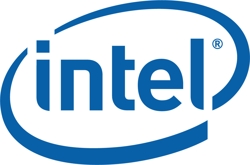Intel’s second bite at the smartphone market has been more akin to a gentle nibbling around the edges. At the end of last year the chipmaker teased a smartphone reference design running its Medfield x86 Atom SoC. Nine months later Intel chips have found their way inside six real world smartphones, yet none apparently destined for the U.S.
The six smartphones are the Lava XOLO X900 (an exclusively Indian device), the Lenovo K800 (targeting China first), Megafon’s Mint (a Russian carrier-branded device), the Orange San Diego (a UK carrier-branded launch), the ZTE Grand X IN (heading to Europe first) and Motorola’s RAZR i (coming to select European and South American markets).
Aside from Intel internals, the RAZR i closely resembles the recently announced Droid RAZR M (the latter is a U.S. device) — which further flags up the U.S.-shaped hole in Intel’s smartphone strategy. What’s going on here?
The likely explanation is there’s no support for LTE in Intel’s current Medfield chips. And with 4G such a dominant force in the U.S. you need to command a brand as massive as Apple to get away with flogging LTE-less phones (the iPhone 5 being Cupertino’s only 4G phone).
The lack of LTE support in Medfield chips was confirmed to TechCrunch by Sumeet Syal, Intel’s Director of Product Marketing (he wouldn’t be drawn on explaining the politics behind Medfield’s current geographical spread). He also confirmed 4G support is in the pipeline, noting that Intel will be “shipping some LTE products later this year and ramping into 2013” — so that particular barrier to U.S. entry may soon be removed.
Multicore chips vs hyper threading
Syal said Intel is also readying a dual-core Atom Medfield chip. Its current Medfield chip architecture is single core, although the SoC includes a technique to boost multitasking called hyper threading which — Intel claims — allows it to out-perform some rival multicore chips.
“Even though it’s a single core it has hyper threading technology so essentially you’re able to do multitasking through a hyper-threaded environment. So that’s how we’re able to demonstrate that a single core from Intel outperforms a lot of the dual-core and quad-cores out there,” said Syal.
“Our next gen product will be a dual-core but again that product will also have hyper threading so essentially… you will also have dual-core with four threads. So again just like we demoed that a single core hyper-threaded can outperform dual-core/quad-core I think we’ll do it again when we introduce the dual-core product with four threads.”
But if hyper threading is as good for performance as Syal says it is, why does Intel need to invest in making multicore chips at all?
“You have to take a look at how many instructions per clock can the architecture handle — our belief is that others are throwing cores at the issue in terms of getting more performance. We make that determination based on our architecture so we felt very comfortable coming out with a single core dual-threaded for our first product, and as we’re able to get more and more performance in the right implementation of the architecture we believe putting in dual-core would be the right thing for our next generation product,” said Syal.
On the question of quad-core, it seems likely Intel sees four cores in Atom’s Medfield’s future but Syal would not be drawn. “We’re not disclosing any plans yet of quad-cores,” he said.
Android app incompatibility
App compatibility is another area where Intel is having to play catch up. Despite working closely with Google to optimize its chip architecture for Android, not all Android apps are compatible with Intel’s SoCs — including, in a recently flagged example, Google’s own Chrome for Android browser. This was noticed by Android Central — after some hands on time with a pre-release version of the RAZR i. (Chrome compatibility is due to be fixed in time for the RAZR i’s launch, says Motorola.)
Syal said the “majority” of Android apps are compatible with Medfield chips but refused to specify an exact percentage — although Intel has previously claimed 95 per cent of apps are compatible (which was a correction of a previous Intel statement pegging Android app compatibility at just 70 per cent of apps).
“We’re not quoting any numbers — but the majority of all the apps we’ve tested work just fine,” said Syal.
Syal added that Intel’s internal software and services group has been working “since the launch of our product and constantly round the clock to make sure that all these apps work… so those numbers [of incompatible apps] are changing by the day”.
Asked to sum up Intel’s current performance in the smartphone space, he described the company as “comfortable” with how much progress it’s made this year. “We’ve just gotten into the game, since the beginning of this year, right now we’re really comfortable with how we see our penetration — six products have now been publicly announced into the marketplace. There’s more stuff to come — but we’re not talking specific numbers.”
Intel is currently in a quiet period, ahead of its Q3 earnings report (scheduled for October 16) which may be one reason for keeping its powder dry.
